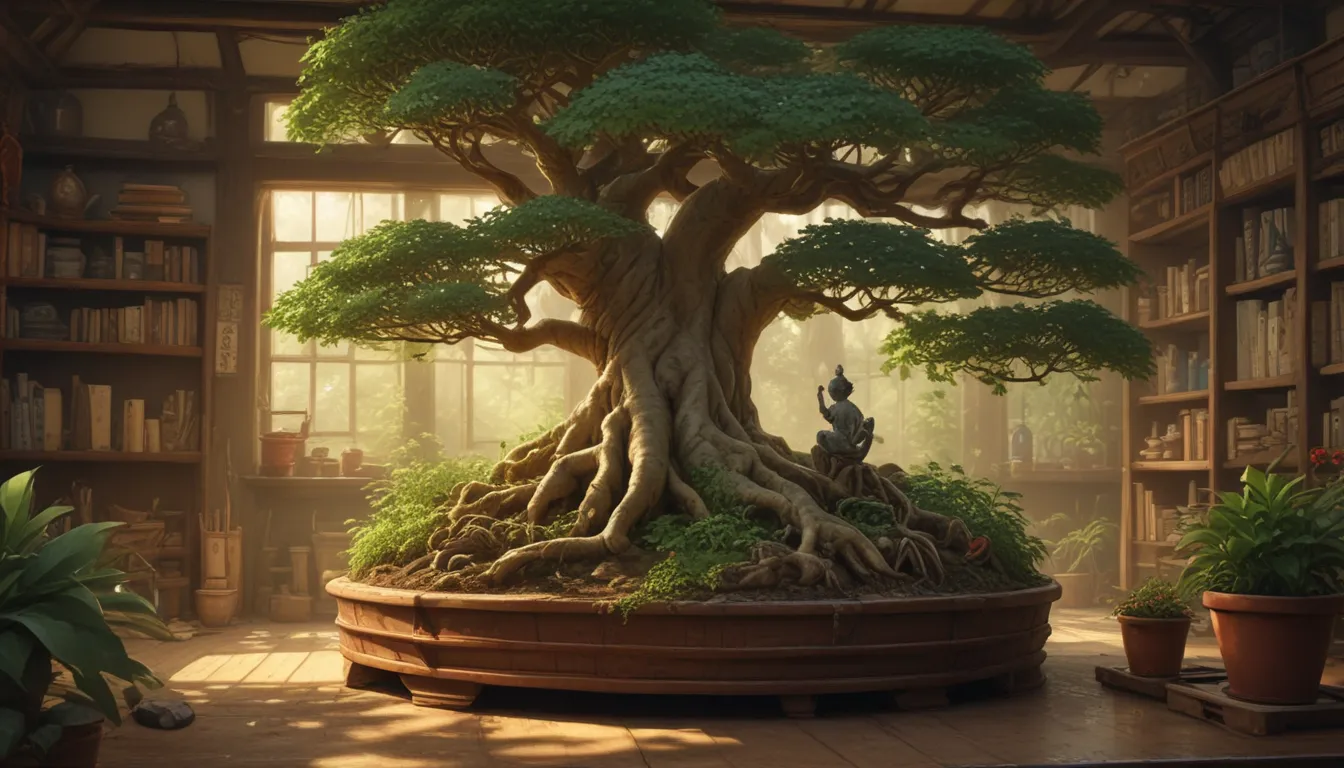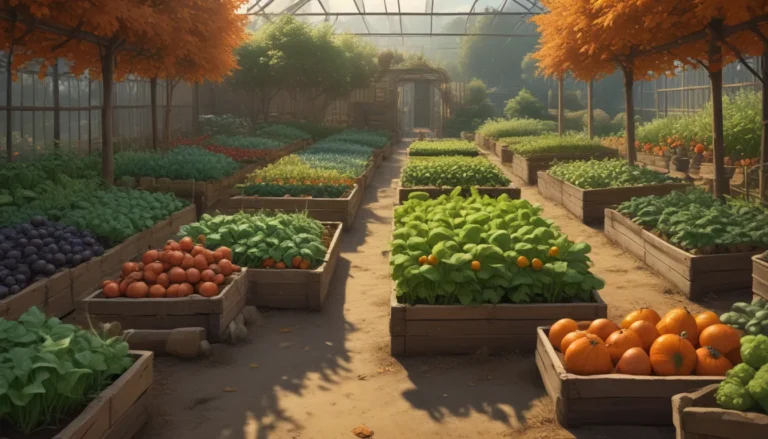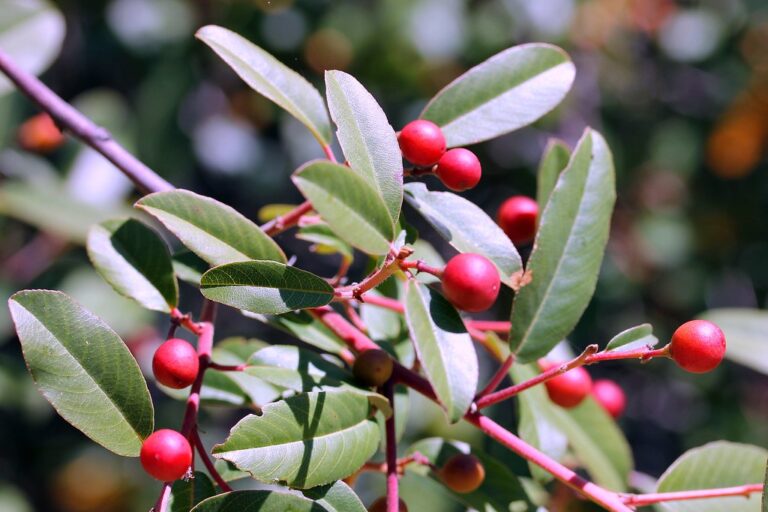Comprehensive Guide on How to Cultivate a Ginseng Ficus Bonsai

Are you intrigued by the art of bonsai but not sure where to start? Look no further than the captivating world of Ginseng Ficus bonsai. Also known as curtain figs or Indian laurels, these bonsai specimens are popular for their thick trunks that give the impression of age beyond their years. Perfect for those who are eager to see results sooner rather than later.
Ginseng Ficus trees are versatile as they can be grown both indoors and outdoors, making them an ideal choice for beginners who may not have the outdoor space to cultivate traditional bonsai species. They are adaptive, vigorous, and resilient, making them a favorite for many bonsai enthusiasts.
In this detailed guide, we will delve into the intricacies of growing Ginseng Ficus bonsai. From choosing the right container to pruning and shaping techniques, we will cover everything you need to know to nurture your own stunning bonsai specimen.
Key Learning Points
Here are the essential topics we will cover in this guide:
- Ginseng Ficus Basics
- Choosing a Suitable Container
- Watering Techniques
- Ideal Sun Exposure
- Pruning Methods
- Repotting Guidelines
- Recommended Cultivars to Consider
If you’re eager to get started on your bonsai journey, let’s explore the fascinating world of Ginseng Ficus bonsai together.
Ginseng Ficus Basics
Ginseng Ficus trees typically begin their life as epiphytes, attaching themselves to other plants for support. As they mature, they develop aerial roots that anchor into the ground, transitioning into terrestrial trees.
These aerial roots add to the distinctive appearance of Ginseng Ficus bonsai, mimicking aged trunks and contributing to their aesthetic appeal. Additionally, these trees can produce small fruits, adding an element of interest to their display.
While they have the potential to grow up to 100 feet tall in the wild, diligent pruning can maintain them at a manageable size suitable for bonsai cultivation. There are specialized bonsai cultivars available, or you can opt for the species variety for ease of training.
Whether you choose a pre-shaped bonsai or decide to cultivate your own from a young plant, Ginseng Ficus bonsai offer a rewarding and visually striking addition to your collection.
Choosing a Container
Selecting the right container is crucial for the health and aesthetics of your Ginseng Ficus bonsai. Pot size should be proportionate to the size and shape of the tree. A container that matches the width of the canopy is generally recommended.
When starting with a young plant, a standard four- or six-inch oval or rectangle pot is suitable. The choice of pot shape can influence the overall balance and visual appeal of your bonsai.
Ensure that the container has adequate drainage holes to prevent root rot, a common issue in bonsai cultivation. Repotting is best done in spring, summer, or early fall to promote healthy growth and establishment.
Watering Techniques
Watering is a critical aspect of bonsai care, requiring attention to prevent over or under-watering. Ginseng Ficus bonsai should be watered thoroughly, allowing the substrate to become moist without waterlogging.
Monitor the weight of the pot to gauge watering needs and adjust according to the plant’s growth and environmental conditions. Winter watering requirements may differ from those in summer, necessitating a flexible approach based on seasonal changes.
Ideal Sun Exposure
While Ginseng Ficus bonsai can thrive indoors, they benefit from morning sun and bright, indirect light for optimal growth. Gradually acclimate your plant to outdoor or direct sunlight if desired, ensuring a smooth transition to prevent stress or leaf burn.
For outdoor cultivation, Ginseng Ficus trees are well-suited to USDA Hardiness Zones 9a to 11b. Consider seasonal adjustments for indoor and outdoor placement to provide the best conditions for your bonsai.
Pruning Methods
Pruning is a crucial skill in bonsai cultivation, shaping the tree to resemble natural forms in miniature. Clean tools and gradual pruning are advised to achieve the desired aesthetics.
Periodic root pruning is necessary to maintain the size and health of your Ginseng Ficus bonsai. Remove dead or damaged roots and trim the canopy to reduce the plant’s overall size and maintain a balanced appearance.
Repotting Guidelines
As your bonsai grows, periodic repotting may be required to upgrade container size and refresh the potting medium. Root pruning and branch trimming are essential steps in repotting to ensure the continued health and vigor of your Ginseng Ficus bonsai.
Fertilization is also crucial to provide essential nutrients for robust growth, promoting a healthy and thriving bonsai specimen.
Recommended Cultivars to Select
Various cultivars of Ginseng Ficus offer unique characteristics suitable for bonsai enthusiasts. Consider the following cultivars for their distinctive features:
- Kaneshiro: Bred as a miniature option, this cultivar displays ample aerial roots and oval leaves, ideal for bonsai shaping.
- Golden Gate: Well-suited for outdoor cultivation with a tolerance for temperature variations and wind exposure.
- Green Emerald: Known for thick, fleshy leaves and abundant fruiting, adding visual interest to bonsai displays.
- Green Island: Naturally compact and easy to maintain, making it an excellent choice for bonsai enthusiasts.
- Mini Flat Leaf: Perfect for cascading growth with compact foliage and glossy leaves, creating an elegant bonsai display.
The Indoor Bonsai Lover’s Go-To
Ginseng Ficus bonsai offer an excellent option for indoor cultivation, providing year-round enjoyment without exposure to harsh outdoor conditions. Their accelerated growth and mature appearance make them an ideal choice for indoor bonsai enthusiasts.
Experiment with different shapes and styles to create a unique and visually appealing bonsai display in your indoor space. Share your bonsai aspirations and plans in the comments section below to inspire fellow enthusiasts.
Conclusion
In conclusion, Ginseng Ficus bonsai are a delightful and rewarding choice for both novice and experienced bonsai gardeners. With proper care and attention to detail, you can cultivate a stunning bonsai specimen that brings joy and tranquility to your home or garden.
For more guidance on bonsai care and techniques, explore our related guides on bonsai cultivation essentials. Stay tuned for more insightful articles and resources to enhance your bonsai journey.
We hope this in-depth guide has inspired you to embark on your Ginseng Ficus bonsai adventure. Cultivate your creativity and passion for bonsai with these captivating trees. For further information and expert advice, explore our comprehensive bonsai resources.
© Bonsai Enthusiast, LLC. ALL RIGHTS RESERVED. Refer to our TOS for detailed information. Product images courtesy of reputable vendors. Uncredited images sourced from premium image libraries.





